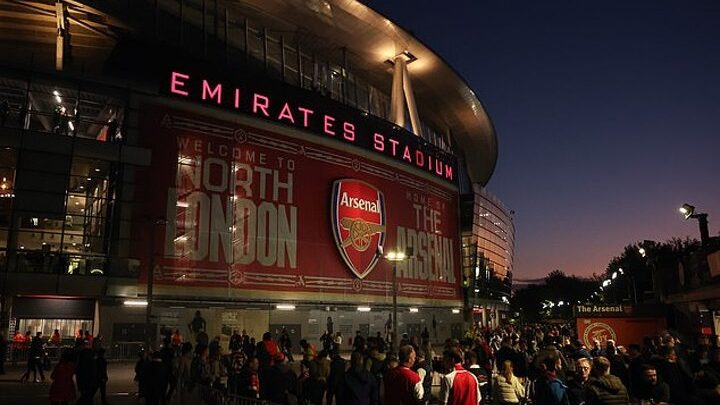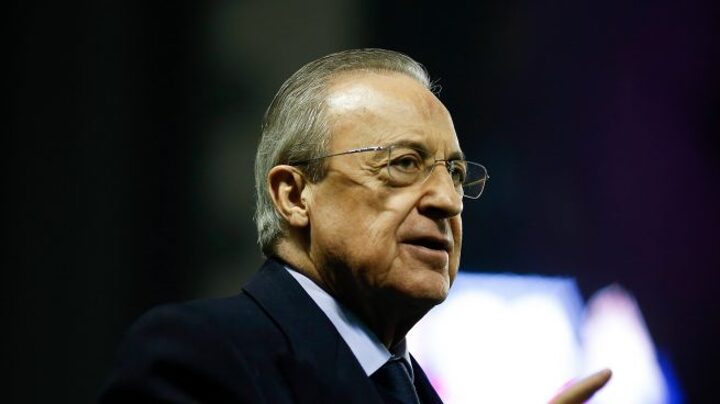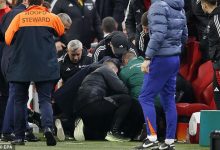Sport
How Arsenal can supercharge the Emirates Stadium to catch up with rivals

Josh Kroenke's words were short, but a sign of where Arsenal and the Emirates Stadium are going.
Despite only opening in 2006 and memories of Highbury still fresh, the 60,000-seat, £390 million arena is already starting to lag behind the Gunners' rivals and is in need of renovation.
“The internal conversations about (the stadium) are starting to get going,” Kroenke, son of club owner Stan and his point of contact in Britain, told ESPN in July. “It's not an easy renovation, but we see the possibilities of what is there.”
It is understood talks are at an early stage and Arsenal are yet to approach Islington Council and Transport for London (TfL). But behind the scenes, Mail Sport can reveal that the city council's diktat, security concerns and choosing the best way to expand the Emirates are just some of the hurdles the club must overcome.
But it is necessary. With 60,704 seats, Arsenal currently have the fifth largest stadium in the league – they were second when the Emirates opened. Manchester United (74,197) remain ahead, while Tottenham (62,850), West Ham (62,500) and Liverpool (61,276) have all passed.
And Manchester City could soon take over the Gunners too – expanding their North Stand, which could push the Etihad past the 60,000 mark.
At the same time, other teams want to expand even further or move elsewhere for more space. Man United are considering building a 100,000-seat 'Wembley of the North', while West Ham plan to increase the capacity of their London Stadium to 68,000.
Reports emerged last week that Arsenal have set a target of 80,000 seats, which would make the Emirates the fifth largest stadium in Europe after Nou Camp, Wembley, Twickenham and the Stade de France.
Under the ownership of Kroenke Sports and Entertainment (KSE), Arsenal often stayed ahead. Pride is at stake. They're in contention for the title again, yes, but there's a hunger to regain their rivals' lead off the field.
First, there is necessity. Adding capacity is a logical step, especially when it comes to increasing revenue and reducing the season ticket waiting list that spans more than a decade.
According to the latest financial figures from Deloitte, Arsenal earned a total of £464.6 million in revenue for the 2022-2023 season. That was significantly less than Manchester City (£712.8m), Manchester United (£648m), Liverpool (£593.8m), Tottenham (£549.6m) and Chelsea (£512.5m).
For that same season, Arsenal's wage bill (£235 million) was also smaller than that of all their Big Six rivals. So there is room for improvement.
Neighbors Spurs, for example, trump the Gunners in the field of catering and hospitality. They earn almost £6 million per match at their venue, and while Arsenal's total annual fee (£102.6 million) is impressive, it still lags behind Man United (£163.4 million) and Spurs (£117, 6 million).
In the summer, Arsenal increased the price of their season tickets by a whopping six percent. That has led to fans paying at least £100 more, with prices ranging from £461.50 to £2,050.50.
So what can they do? Here are a few options, based on conversations with expert building developers.
One option is to get creative with the existing chairs, remove them in certain places and replace them with slightly smaller ones. Even if you were to make them, say, an inch smaller, the capacity would increase by a few thousand.
Another option is to lower the pitch. The playing surface of the 70,240-seat SoFi Stadium, home of the NFL's Kroenke-owned LA Rams, is 100 feet below grade, allowing expansion vertically rather than outward.
This is important because the Emirates are somewhat landlocked, with railway lines running close to the western and eastern stands. However, Arsenal are unlikely to be able to achieve this due to the design of the stadium and the restrictions that lowering the pitch would place on sightlines.
Another alternative is to renovate individual stands, which would require closing parts of them for a period of time and briefly reducing matchday revenues. The West Stand in particular would be tricky to work on as it is where the team's dugouts and dressing rooms are located, but the others have gaps between the back row of seats and the roof that could potentially be filled.
The next option is the roof. It is believed there is scope to replace these so that more tiers could be built in the top tier or as a new fifth tier, although this would be expensive and the view from the top of the extended stand would be limited.
The curveball move in left field would be to move elsewhere. The club have not suggested this is being considered at all, and given that 2006 wasn't that long ago, it would be a seismic decision.
It would also cause problems for Islington Council and Transport for London (TfL). Mail Sport understands that the council is well aware of the benefits the Emirates has brought to the local environment.
Unlike other areas in the London boroughs, the local community of Highbury and Islington still has a thriving pub and restaurant scene – driven by matchdays – despite the impact of Covid, which has forced many venues elsewhere to close.
This season the club has moved to hosting more non-football events to further increase their income. The Emirates will host the XTX Markets London Chess Classic 2024 from November 29 to December 7, with a rest day on December 4, when Arsenal will play United. Talks about the deal started in June.
The tournament, which is in its 14th edition, usually takes place at Kensington Olympia. Arsenal also announced this week that the stadium will host a Robbie Williams concert on June 6 as part of his European tour.
Mail Sport understands that the club is monitoring further hosting options, especially with an international appeal.
So the possibility of the Kroenke ownership uprooting to build a new, bigger stadium elsewhere is not something they want, however unlikely. That said, it is clear that the council has long had reservations about a capacity increase due to concerns about the safety of crowds and the allegedly inadequate public transport close to the ground.
The council and TfL's relationship with Arsenal is complicated and predates Kroenkes' purchase of shares in the club in 2007.
Arsenal submitted a planning application for a new stadium in November 2000, but it was not until December 2001 that the council approved their planning application, with a number of local groups opposing the move from Highbury.
Gaining approval for the plan was a long, tempestuous process. It is understood Arsenal had to provide an undisclosed sum to TfL to improve Holloway Road tube station, the nearest tube stop to the Emirates, as there were concerns from the council about matchday safety in terms of overcrowding.
But it is believed the money Arsenal provided was instead used for work at Highbury and Islington station, a 15-minute walk from the Emirates.
As a result, Holloway Road and Drayton Park stations – the two closest to the ground – are closed on match days due to the risk of overcrowding, while Highbury and Islington and Arsenal Tube station have long queues after matches.
If the north London club needs to apply for planning permission and get the council's green light for expansion, Mail Sport understands that money will be needed for work at at least Holloway Road tube station to increase capacity. Whether the Kroenkes want to raise the money for this remains to be seen.
Owner Stan's background is in the real estate sector. Thus, he began making his multi-billion dollar fortune by building shopping centers and apartment buildings. He has developed many plazas near Walmart stores.
In recent times, construction work related to its sports teams has increased dramatically. In August, his Rams team moved to a new team training facility and headquarters in Woodland Hills, where Stan has spent around $650 million (£507 million) on a development that includes training fields, offices and hotels.
In October of this year, the Denver City Council approved Stan's plan to turn 64 acres of parking at the home of his Denver Nuggets basketball and Colorado Avalanche ice hockey teams into an expanded downtown area with 6,000 homes, a 5,000-seat venue and a new hotel . .
And then there's SoFi, the jewel in their crown. The 3.1 square meter ultra-modern venue, which opened in 2020, features a double-sided oval video board – the first stadium to have one – and has been the inspiration for Real Madrid's renovated Bernabeu and the upcoming 'new Old Town Hall '. Trafford'.
When Mail Sport visited SoFi during the Gunners' summer US tour, we were shown the various chic suites and told how the venue will be temporarily transformed into a swimming pool for the 2028 LA Olympics. It is a very striking and unique arena, and a symbol of the ambitions of its owners.
And even with early-stage talks, it appears the Emirates is next on Kroenke's list.
Whatever they do to increase capacity will come at a high price. But in the ever-competitive Premier League, standing still means falling behind, and Arsenal certainly cannot afford that.








